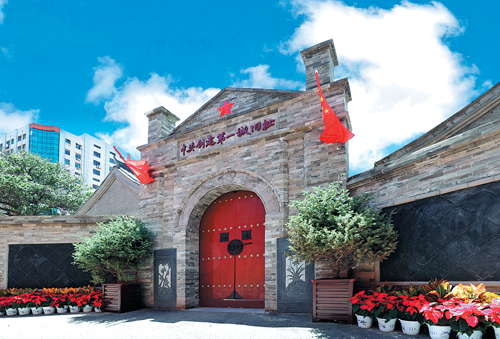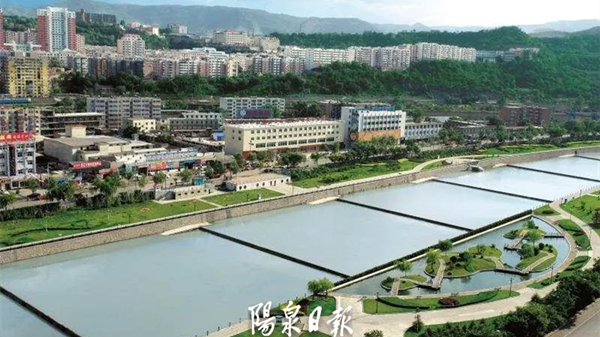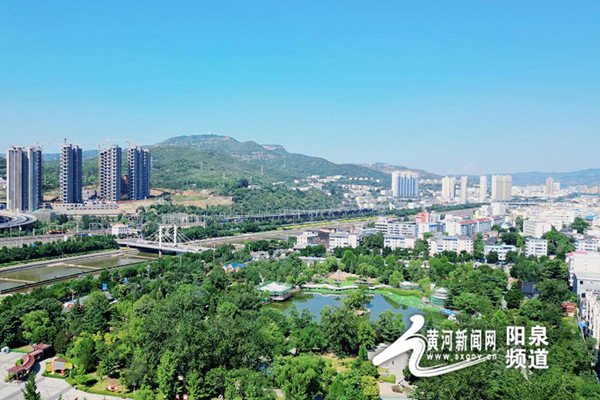Shanxi's key Party sites draw visitors ahead of centenary

The courtyard at Baojin Alley in Yangquan is the site of the first city administration established by the Communist Party of China. [Photo by Zhang Zheyuan for China Daily]
Tourists across province and China flock to Yangquan for patriotic education and inspiration
Baojin Alley in the city of Yangquan, eastern Shanxi, looks like any ordinary alley in the North China province.
Several old houses and courtyards are scattered along the alley, and are surrounded by a great number of modern buildings.
A courtyard with its gate decorated with a red five-point star and a plaque inscribed with red Chinese characters is the most remarkable among the old houses and structures.
The characters read: "the first city administration established by the Communist Party of China". With the centennial of the CPC on July 1 approaching, the site is the pride of the city.
Since it was opened to the public on April 21 as a museum of the city's history related to the CPC, the courtyard has become a top destination for visitors.
The courtyard has a number of rooms with plaques describing its function as government and Party departments more than seven decades ago.
On April 26, the site welcomed more than 1,600 students and teachers from the Xiazhan Primary School in Yangquan. They listened to the introduction given by a tour guide.
"Yangquan is a Red city, with many locations related to the history of the CPC and the nation's revolutionary past," the guide said. "This commonplace courtyard where we are standing is the site of the Yangquan CPC committee and the city's people's government."
Founded on May 4, 1947, the CPC-led Yangquan city government is the first city administration established by the CPC, the tour guide said.
In addition to the first city administration site, Yangquan has many other historical things to be proud of.
The city, located at the heart of the Taihang Mountains, used to be an important base for the CPC-led Eighth Route Army during the War of Resistance Against Japanese Aggression (1931-45).
Shinao Mountain, in the southwestern suburbs of Yangquan, was an important site for the Hundred Regiments Offensive. The major campaign of the Eighth Route Army divisions was commanded by general Peng Dehuai (1898-1974) against the Japanese army in North China in 1940.
The Eighth Route Army mobilized more than 400,000 soldiers in 115 regiments for an offensive against the Japanese invaders from August to December in 1940.
The Communist forces attacked Japanese garrisons and destroyed facilities they were using for supplies in its aggression in China. These included railways, highways, bridges, tunnels, coal mines and factories.
The offensive was the greatest victory of the Eighth Route Army during the war. A museum and a monument were built on top of Shinao Mountain to remember the heroism, courage and dedication of the Eighth Route Army soldiers.
Like Yangquan, many other cities and regions in Shanxi are using their Red cultural resources to help CPC members and residents to learn about the history of the Party and be inspired.
Changzhi, a city in the southeast of Shanxi, for instance, is home to the first campus of the Chinese People's Anti-Japanese Military and Political University.
The university, also known as Kangda in Chinese, was founded in January 1937. It was an important base for the CPC to train military and political cadres for the War of Resistance Against Japanese Aggression.
The first campus of Kangda, located in Gangshang village in Changzhi's Tunliu district, was founded in December 1938. It trained the largest number of military officers and political officials of all the Kangda divisions for the fight against the Japanese aggressors.
In recent years, the district government has invested more than 20 million yuan ($3.08 million) in renovating the site of the first campus of Kangda, making it a top tourist destination in Tunliu.
The site receives tens of thousands of visitors annually, offering a base for patriotic education while creating jobs and generating revenues for locals.
Guo Yanjie contributed to this story.





